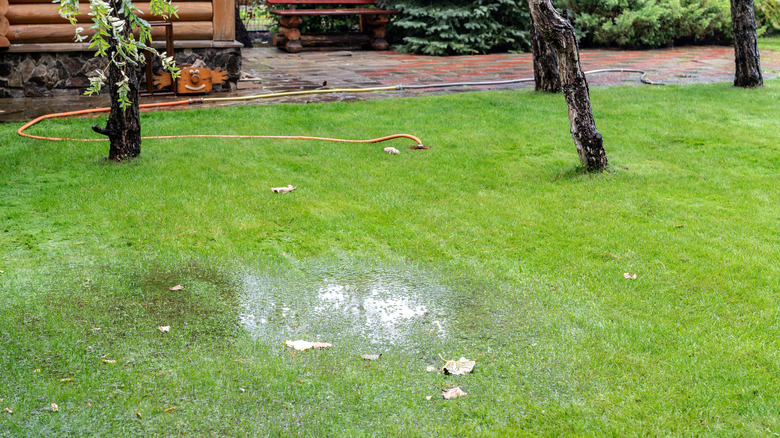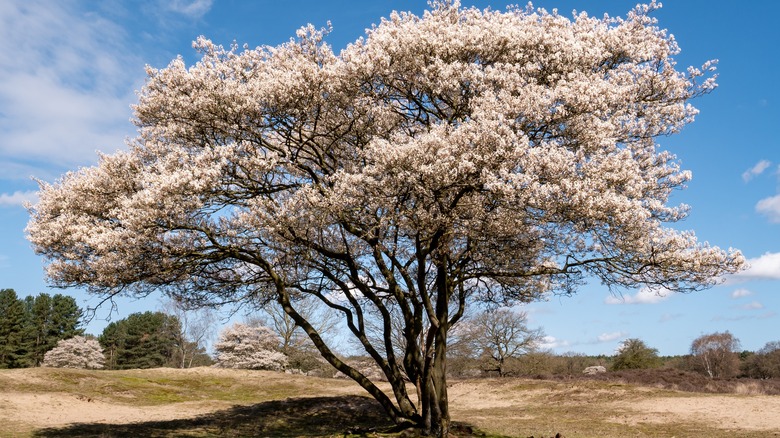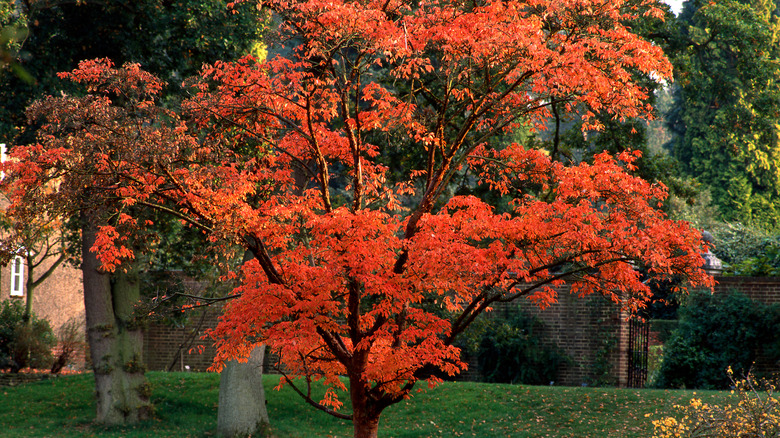Trees You Can Plant Without Worrying About Your Water Lines Getting Damaged
No one likes dealing with sewer and water line problems. They're messy, smelly, and often quite expensive to fix. Tree roots are one of the biggest offenders when it comes to water and sewer line damage, but that doesn't mean you need to choose between having problem-free lines and a beautifully landscaped yard. By opting for slow-growing small trees with less aggressive roots, you can generally keep your landscaping without sacrificing your water and sewer lines. Trees like serviceberry (Amelanchier spp.), smoke tree (Cotinus spp.), and paperbark maple (Amur griseum) all fit this bill perfectly.
It's important to keep in mind that The University of Tennessee Agricultural Extension Service warns that there is no such thing as truly sewer-safe trees, only trees that are sewer-safer. So, even if you opt for a small and slow-growing tree, it still may eventually become a problem and require removal or replacement if it is located near a sewer or water line. By planting your trees at least 10 feet from your sewer lines and using root barriers, you can further reduce your chances of having problems with tree roots growing into vulnerable pipes.
Sewer-safer trees
Considering sewer-safer trees are generally small, slow-growing, and non-aggressive, it's no surprise that serviceberries are a popular recommendation. Rarely growing past 15 to 25 feet tall and relatively slow-growing, these trees are an ideal option for homeowners in zones 4 through 9. Not only are serviceberries unlikely to cause problems with your water and sewer lines, but they also have beautiful flowers and fruits and are a great way to bring more birds to your yard. Even better, most species of serviceberry are native to North America.
The smoke tree is another great tree to consider if you want to enjoy unique flowers without risking your water and sewer lines. With a height that seldom exceeds 15 to 20 feet and unique smoke-like seeds, these trees offer a lot of beauty without requiring a lot of space. Hardy in zones 3 through 8, smoke trees aren't considered difficult to care for, thanks to their relatively low-maintenance needs, and some species, like the American smoke tree (Cotinus obovatus), are even native to North America.
Maple trees and sewer lines
You may have heard that maple trees aren't suitable for planting near sewer lines, which is often the case. Many maple species have large and aggressive root systems which can easily find their way into sewer lines. This isn't the case for all maple trees, though. While you should avoid planting red maples, sugar maples, and silver maples near sewer lines, that doesn't mean you have to give up on growing all maple trees. Amur maples (Acer tataricum subsp. ginnala) aren't considered likely to cause problems for sewers. Still, unfortunately, they can be invasive in some parts of the Midwestern and Northeastern United States, making them a poor choice for many North American gardeners. Japanese maples (Acer palmatum), which are also a good option from a sewer line point-of-view, are considered invasive in Virginia and Washington, D.C.
One maple option that isn't invasive in the United States or prone to cause issues with sewers is the beautiful paperbark maple. Paperbark maple trees are slow-growing and don't generally grow past 30 feet tall, making them an excellent option for homeowners in zones 4 through 8. Not only are paperbark maples non-invasive and unlikely to cause problems with your sewer, but they also offer multi-season interest thanks to their pretty bark that sparkles all year long.


